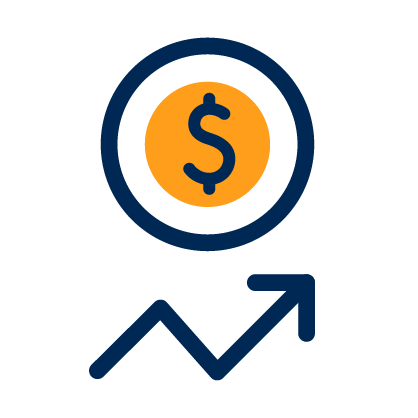Currency chart
AUD/USD currency chart: 1.00 AUD = 0.6493 USD
Aussie dollar trades below US$0.65
Daily Currency Update
The Australian dollar is stronger this morning when valued against the Greenback currently trading at US$0.6480 at the time of writing. The Aussie dollar continues its upward trajectory for the second consecutive session on Tuesday, buoyed by improved risk appetite. On the data front yesterday Australia’s Judo Bank Purchasing Managers Index (PMI) Composite rose to a 24-month high of 53.6 in April compared to the previous month’s 53.3. The Australian private sector ticked up into an accelerated pace of growth in the second quarter bolstered primarily by Services sector growth. Australia’s Manufacturing PMI Output rose to an eight-month high of 49.1 compared to March’s 45.7, brushing off a 2-month low of 54.2 in the Services Business Activity compared to March’s 54.4. Looking ahead today the Australian Bureau of Statistics will release the latest Consumer Price Index (CPI) which is expected to increase from 0.6% to 0.8% for the last quarter. Consumer prices account for a majority of overall inflation. Inflation is important to currency valuation because rising prices lead the central bank to raise interest rates out of respect for their inflation containment mandate. Finally, on Friday we will see the release of the Producer Price Index (PPI). There will be no commentary tomorrow due to the Anzac Day public holiday.Key Movers
The pound bounced back from US$1.2300 in Tuesday’s early session as the S&P Global/CIPS posted stronger-than-expected United Kingdom preliminary Services PMI data for April. Surprisingly, the Services PMI jumped to 54.9 from the prior reading of 53.1. Investors forecasted the Services PMI to drop slightly to 53.0. The preliminary Manufacturing PMI, surprisingly contracted, remains below the 50.0 threshold that separates expansion from contraction after expanding in March. The factory PMI falls sharply to 48.3 from expectations and the prior reading of 50.3. Looking ahead to the rest of this week investors will shift focus to the core Personal Consumption Expenditure Price Index (PCE) data for March, which will be published on Friday. The monthly core PCE Price Index is estimated to grow steadily by 0.3%. Annually, the underlying inflation data is expected to soften to 2.6% from 2.8% in February.The US Dollar Index (DXY) is trading softly at 105.70 tallying daily losses on Tuesday’s session. Investors will be keeping an eye on vital economic reports due this week, including the preliminary figures of Q1’s Gross Domestic Product (GDP) Growth Rate and the Personal Consumption Expenditures (PCE) Price Index from March to gain further insight into the economy’s health. During Tuesday’s session, S&P PMIs came in lower than expected and made the USD face selling pressure. US Treasury bond yields are dwindling with the 2-year yield at 4.93%, the 5-year yield at 4.61%, and the 10-year yield at 4.58%.
Expected Ranges
- AUD/USD: 0.6400 – 0.6600 ▲
- AUD/EUR: 0.5950 – 0.6150 ▲
- GBP/AUD: 1.9050 – 1.9250 ▼
- AUD/NZD: 1.0800 – 1.1000 ▲
- AUD/CAD: 0.8750 – 0.8950 ▼
Currency charts made easy
Our currency chart helps you review different currency pairs and analyse exchange rate trends. All charts are interactive, and use mid-market rates. To see a currency chart, select your two currencies, with major currencies displaying up to 30 years of history.
Send money to over 170 countries (and counting)
Quick, secure, global payments to more than 50 currencies
AUD Snapshot
- Currency name: Australian dollar
- Currency code: AUD
- Currency symbol: $, A$
- Central bank: Reserve Bank of Australia
- Reserve currency: The Australian dollar is considered a reserve currency.
- Safe haven: The Australian dollar is not considered a safe haven currency.
- Countries used in: Australia
- Major unit: One Australian dollar
- Minor unit: One cent
- Minor units (cents) per Australian dollar: 100
- Note denominations: $5, $10, $20, $50
- Coin denominations: 5¢, 10¢, 20¢, 50¢, $1, $2
The Australian dollar is the official currency of Australia, including its external territories: Christmas Island, Cocos Islands, and Norfolk Island. It is officially used as currency by three independent Pacific Island states: Kiribati, Nauru, and Tuvalu. It is legal tender in Australia.
USD Snapshot
- Currency Name: United States dollar
- Currency Code: USD
- Currency Symbol: $, US$
- Central Bank: Federal Reserve
- Reserve Currency: The United States dollar is considered a reserve currency.
- Safe Haven: The United States dollar is considered a safe haven currency.
- Countries Used In: United States
- Major Unit: One United States dollar
- Minor Unit: One cent
- Minor units (cents) per United States dollar: 100
- Note Denominations: $1, $5, $10, $20, $50, $100
- Coin Denominations: 1¢, 5¢, 10¢, 25¢, 50¢, $1
The United States dollar (symbol: $; code: USD; also abbreviated US$ or U.S. Dollar, also referred to as American dollar, or informally known as the 'buck') is the official currency for the USA, Ecuador, El Salvador, British Virgin Islands, Turks and Caicos Islands, Caribbean Netherlands, Palau, Federated States of Micronesia, Marshall Islands, and East Timor.



